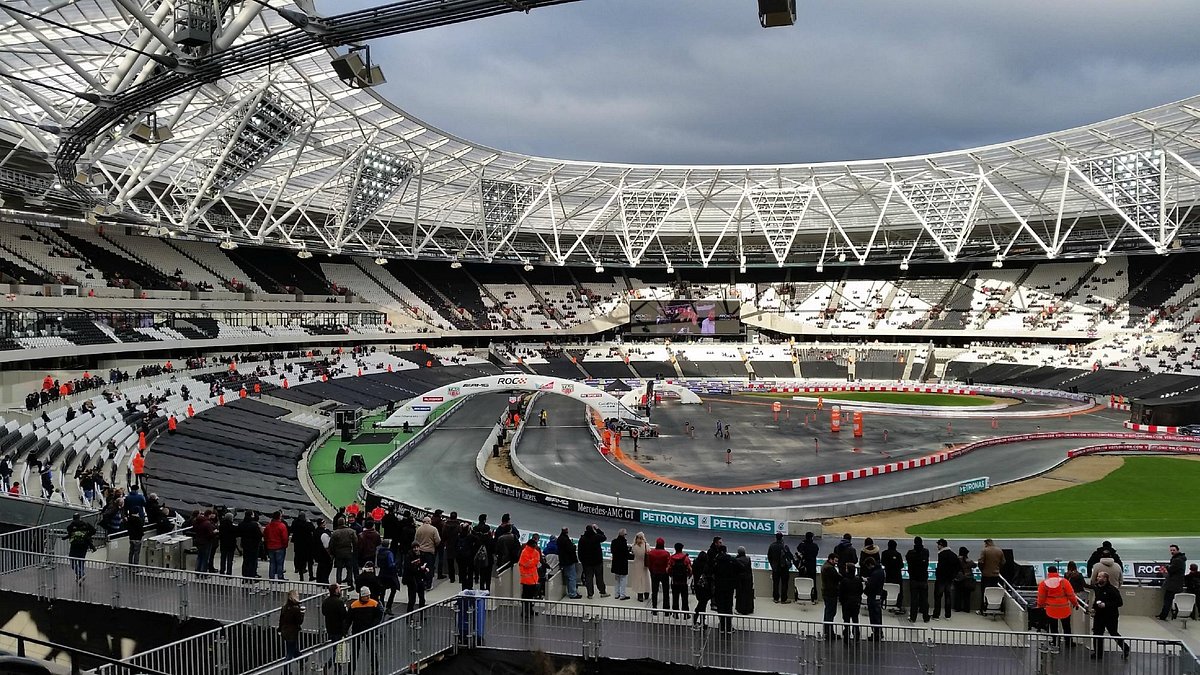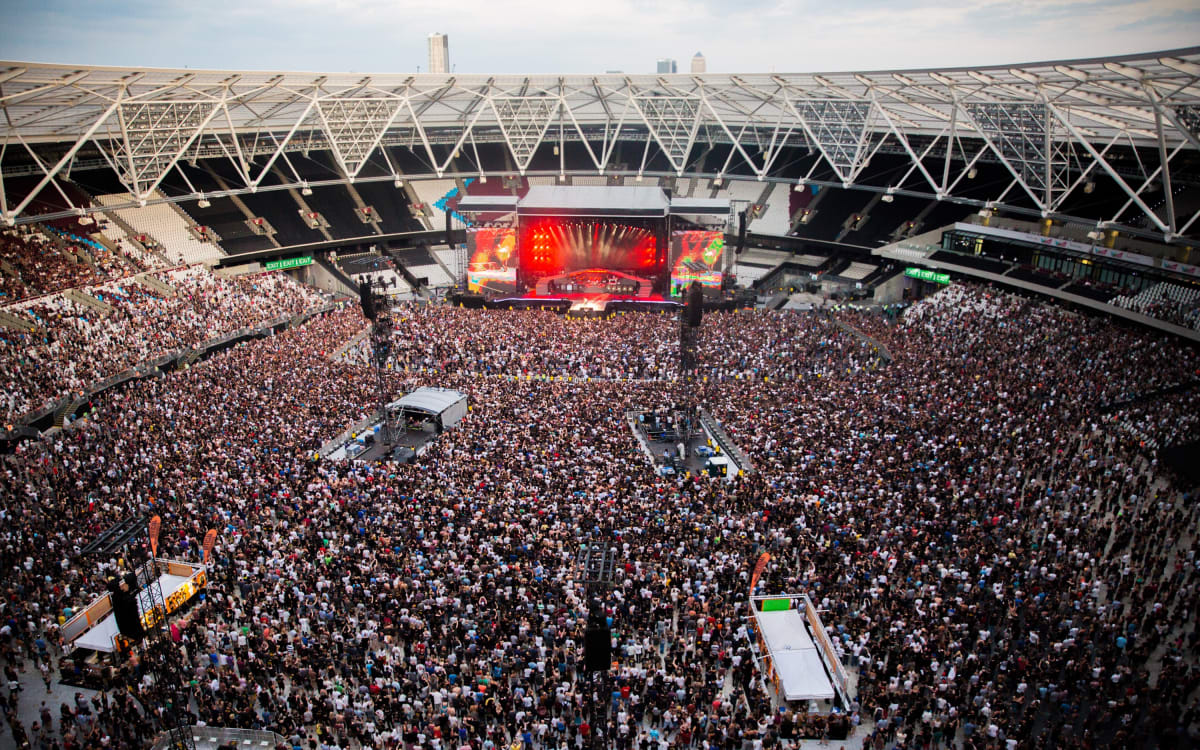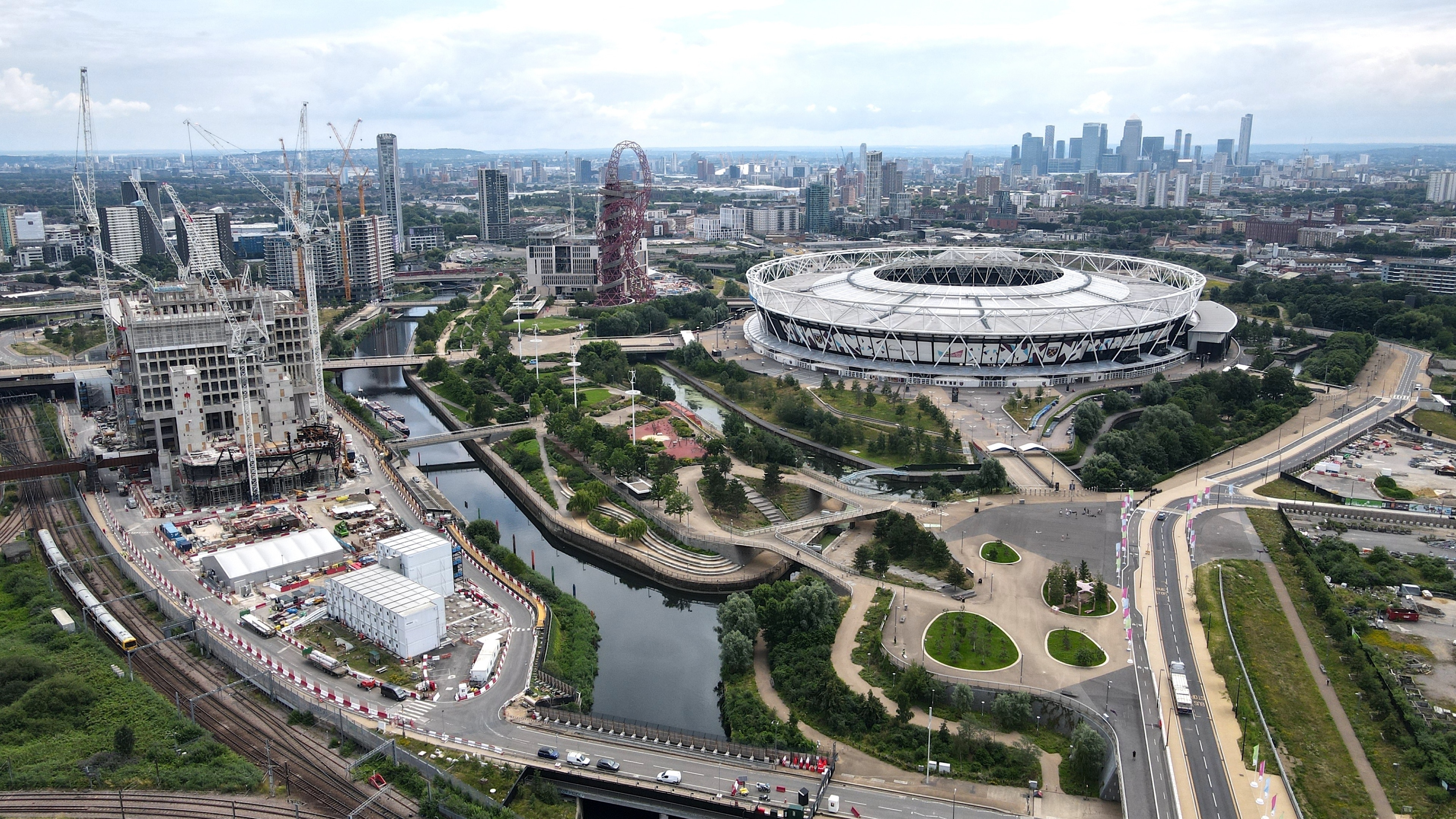The London Stadium, a modern marvel nestled within the Queen Elizabeth Olympic Park, stands tall as the iconic home of West Ham United F.C. Taking up residence in 2012, this impressive venue boasts a seating capacity of 60,000 and represents a significant step forward in the club’s long and storied history. With its state-of-the-art facilities and picturesque surroundings, the London Stadium has quickly become an essential destination for football fans and stadium enthusiasts alike.
As West Ham United’s base of operations, the London Stadium has hosted countless memorable moments. From gripping Premier League battles to exhilarating UEFA Europa League matches, the atmosphere within the arena is always electrifying. Deservedly earning its moniker as “The Hammers” or “The Irons” through its formidable on-field performances, West Ham United F.C. thrives in front of its passionate and dedicated supporters.
Visitors to the London Stadium are treated to a range of matchday experiences and amenities that cater to diverse interests. From engaging stadium tours to the extensive selection of West Ham merchandise, fans from all around the world come together to share their love for this prestigious club. With its rich history, contemporary design, and undeniable sense of camaraderie, the London Stadium remains the beating heart of West Ham United F.C.
Historical Background of London Stadium

London Stadium, now the home of West Ham United, is a multi-purpose stadium located at Queen Elizabeth Olympic Park in Stratford, east London. The stadium has a rich history, with its origins dating back to the impressive London 2012 Olympic Games.
Construction of the impressive stadium began in May 2008, after the bowl of the structure had been excavated and the area cleared. The building process was reportedly completed in March 2011, on time and under budget. The athletics track was laid in October 2011, and the venue was fully prepared to host the 2012 Summer Olympics and Paralympics.
Holding a capacity of 80,000 during the Olympic and Paralympic Games, London Stadium housed numerous athletic events and garnered worldwide attention. Following the games, plans were in place to repurpose the stadium for various uses, including football matches, concerts, and other sporting events.
It was in 2013 that West Ham United secured a 99-year lease on the Olympic Stadium, ensuring that it would become the club’s primary home ground starting from the 2016-17 football season. The decision to make West Ham United the main tenants sparked controversy, but the club ultimately moved in after a successful transition from their previous home, the Boleyn Ground in Upton Park.
The stadium underwent renovations to accommodate football events and the specific needs of West Ham United. The seating capacity was reduced to 60,000, but the venue still offers an impressive and expansive atmosphere for supporters to enjoy. Since its reopening in July 2016, London Stadium has hosted numerous football matches, concerts, and other events, solidifying its status as a premier venue in London’s sporting and entertainment landscape.
Conversion to West Ham United’s Home Ground

The London Stadium, originally constructed for the 2012 Olympic Games, went through substantial transformations in order to accommodate West Ham United as their new home ground. The conversion process involved significant changes to the stadium’s structure, design, and seating arrangements to make it suitable for football matches.
The total cost of converting the Olympic Stadium into a multi-use venue reached a staggering £323m, bringing the overall cost of West Ham United’s new home to £752m. Despite the high price tag, the investment has resulted in a versatile space capable of hosting various events and sports, leading to the stadium being renamed the London Stadium.
One of the first steps in the conversion process was to modify the stadium’s layout and seating arrangement to transition it from an athletics stadium into a football stadium. This change involved removing the original athletics track, adjusting the seating capacity, and implementing retractable seating to provide optimal views for football fans. Over a three-month period during the summer, the process was carefully carried out, with each phase meticulously documented in a time-lapse video.
The £272m conversion project has proved successful in creating a new home for West Ham, while also maintaining the stadium’s multi-use functionality. The outcome of the conversion is both impressive and disorienting, as the exterior of the stadium looks deceptively similar to its original form, while the interior has undergone massive changes to cater to the needs of the football club and its fans.
In recent years, West Ham fans have gradually started to view the London Stadium as their true home ground. The stadium has brought massive improvements to the club’s resources, facilities, and matchday experience, ultimately becoming an integral part of West Ham United’s identity.
Infrastructural Details
Seating Capacity

London Stadium, the home ground of West Ham United, boasts a seating capacity of approximately 60,000 spectators. This impressive venue, originally built for the London 2012 Olympic Games, has since taken on the legacy of hosting West Ham United matches with the capacity making it the fourth-largest stadium in the Premier League.
Pitch Details
The pitch at the London Stadium measures 105 metres in length and 68 metres in width. Groundkeepers maintain the pitch surface in accordance with Premier League standards, ensuring optimal playing conditions for the athletes. The stadium utilises a high-quality Desso GrassMaster system, which combines natural grass with artificial fibres to create a durable and consistent surface, further enhancing the football experience at this remarkable stadium.
Iconic Matches at London Stadium
London Stadium, the home ground of West Ham United F.C., has been a witness to some incredible matches since the team moved there in 2016. Known for its passionate supporters and intense atmosphere, this stadium has hosted thrilling football encounters that have gone down in the claret and blue history.
One dramatic match at the London Stadium was between West Ham United and Tottenham Hotspur in May 2017. In a fiercely contested London derby, West Ham came out on top with a 1-0 victory, thanks to a late goal by Manuel Lanzini. This win not only gave the Hammers’ fans a moment of pride but also dented Tottenham’s title aspirations, giving West Ham supporters even more reasons to celebrate.
Another unforgettable encounter took place in September 2018 when West Ham faced Manchester United. The Hammers were in sparkling form and brushed aside the Red Devils with a resounding 3-1 victory. Goals from Felipe Anderson, Marko Arnautovic, and an own goal from Manchester United’s Victor Lindelöf marked a significant win for West Ham and provided a memorable day for their loyal fanbase.
In May 2021, West Ham entertained Brighton & Hove Albion in a crucial match with European qualification implications. Despite going behind twice, West Ham fought back to secure a thrilling 3-2 victory with goals from Angelo Ogbonna, Tomáš Souček, and most importantly, an 89th-minute winner by Said Benrahma. This win epitomised the never-say-die attitude of the team managed by David Moyes and showed the resilience that their fans admire.
These matches are just a small selection of the excitement and drama that football fans have experienced at London Stadium. With every new season comes the opportunity for more iconic matches to unfold, as West Ham United continue their journey in the world of football.
Influence on Local Community

Since West Ham United moved to the London Stadium in 2016, the impact on the local community has been notable. For over a century, the club resided at the iconic Upton Park, which was a central hub for both community and local businesses.
Upon relocating to the London Stadium, situated in Stratford, the club’s new surroundings presented both challenges and opportunities for local residents and businesses. The development of the area surrounding the stadium has seen an influx of visitors, which has brought increased revenue for bars, restaurants, and shops. This regeneration uplifted the local economy and provided job opportunities for local inhabitants.
Another crucial aspect of the London Stadium’s influence on the local community is West Ham United’s dedication to environmental responsibility. The club collaborates with its landlords on various sustainable initiatives, ensuring zero waste goes to the landfill, which positively impacts the environment.
In addition to the financial and environmental benefits, the club actively engages with the community through various programmes and activities. West Ham United’s community projects focus on education, health, sports participation, and social inclusion, providing a positive outlet for residents and helping to build a strong sense of unity among the local population.
Despite the challenges faced in adapting to a new environment, the London Stadium has gradually started to feel like home for the West Ham United fans. Though it may not yet possess the same sentimental value as Upton Park, its impact on the local community is undeniably substantial in creating a friendlier and more vibrant atmosphere in Stratford.
Future Plans for London Stadium

London Stadium, the home of West Ham United, has some exciting developments and improvements planned for the near future. The club aims to enhance the matchday experience for its supporters, and one of the key aspects of these plans is a capacity increase.
As part of the development, the stadium’s capacity is set to increase from the current 60,000 to 62,500. This will put the Hammers’ home ground ahead of Tottenham Hotspur Stadium in terms of seating capacity. The club was granted planning permission for the expansion on October 27th, and it is expected to greatly enhance the atmosphere during matches.
In addition to the capacity increase, West Ham and London Stadium are planning an £11.5 million revamp for the arena. The proposed upgrades include improved seating arrangements, which are hoped to be installed between the end of the current season and the start of the next.
One aspect of the standoff between West Ham and the stadium’s owners, the London Legacy Development Corporation, involved the installation of a claret carpet. This has since been resolved, and the carpet now helps to create a more unified aesthetic for the stadium, making it feel more like home for West Ham fans.
Overall, these future plans for London Stadium aim to provide a better football experience for West Ham United supporters and promote a sense of pride and belonging within the club’s fanbase.
Conclusion

The London Stadium, now home to West Ham United, has seen a transition from its original purpose during the 2012 Olympic Games. With a current seating capacity of 60,000, there are plans to further expand this number to 62,500, surpassing the Tottenham Hotspur Stadium in terms of capacity. This expansion showcases the growing popularity and success of West Ham United as a football club.
In recent years, West Ham fans have gradually started to embrace the London Stadium experience and adapt to it as their new home ground. While there might still be some who reminisce about the club’s previous residence, it is evident that the club is thriving in its new environment. The stadium’s versatile features, such as its capacity to host different sporting and entertainment events, further add to its appeal.
Investing in the London Stadium has signified a significant chapter for West Ham United, as the club continues to cement its position within the Premier League and attract a wider base of fans. In time, it is expected that the London Stadium will become an even more iconic and cherished home for West Ham United and its supporters.

